The Moulthrops: A Family of Woodturners
In this lesson, students will study the woodturning tradition of three generations of the Moulthrop family. Students will watch Craft In America: FAMILY, featuring the Moulthrops. The class will focus on how the members of Moulthrop family support each other to achieve their goals, and the decision to make art their career. Students will examine the relationship the Moulthrops have with their chosen material, wood. Students will look for evidence of the Moulthrop family’s experimentation and invention. Finally, the class will experiment with creating wood finishes and create an artwork using recycled or scrap wood.
Download Education Guide & Worksheets
… you look at the piece of wood and you can imagine something about the life of the tree.
– Philip Moulthrop

Grade Level: 10-12
Estimated Time: Two 45-minute class periods of research, discussion & planning, followed by four or more 45-minute studio periods.
Background Information
The Moulthrop family resides in Atlanta, Georgia. Three generations of Moulthrops—the late Edward, his son Philip, and his grandson Matthew—have pursued woodturning as a craft and a livelihood. The family members, including Philip’s wife, Renée, and Matt’s wife, Amanda, are supportive of one another to help the family achieve desired goals. The Moulthrops have great respect for their chosen material of wood. They recognize the life and the history of the wood that they use, and consider the wood with a deep, almost spiritual, appreciation. The Moulthrops are experimenters and continue to push the limits of their craft in inventive ways.
Key Concepts
- Family members may help to support each other to achieve certain goals
- Artists may develop a symbiotic relationship with their materials.
- Artists experiment to achieve new things with their artwork.
- Art is a potential career choice.
Critical Questions
- How do families support each other, emotionally and financially?
- What kinds of careers require artistic skill?
- How can a person connect emotionally to a material?
- Why do artists try new techniques, tools and concepts?
Objectives
Students will:
- Become familiar with the heritage and techniques embodied in the woodturning of the Moulthrops.
- Delineate ways families may support each other.
- Consider art careers.
- Experiment with surface treatments of wood.
- Articulate an idea about family, trees, nature, or history, and express it through an artwork created from recycled wood.
Vocabulary
Lathe, Chisel, Gouge, Grit (sandpaper textures)
Interdisciplinary Connection
Science: studying wood and trees, experimenting and recording results.
National Standards for Visual Arts Education
Content Standard:
1. Understanding and applying media, techniques, and processes
5. Reflecting upon and assessing the characteristics and merits of their work and the work of others.
Resources & Materials for Teaching
Resources
- Craft in America DVD, FAMILY episode. Also viewable online at www.craftinamerica.org/episode/family
- Craft in America website, www.craftinamerica.org
- The Moulthrops’ website www.moulthropstudios.com
- References and handouts listing and describing careers in art
- Kutztown University guides on art education careers and studio art careers: mdarteducation2.pdf
mdstudioart2.pdf
Worksheets
- Inventing Wood Finishes
- Extending the Life of a Tree
Materials for Studio Production
Materials to be gathered include media for various experimental wood finishes. Encourage students’ additional ideas for media. Also, students may help gather natural wood such as twigs, scraps of wood, and used wooden items to be recycled in projects.
- wood scraps
- craft wood pieces
- wood and tree materials from local sources: twigs, acorns, pods, etc. found on the ground around trees
- old items from discards and thrift stores: wooden bowls, boxes, stools, picture frames, toys, shelves, trays, etc.
- paper scraps for decoupage
- pastels, crayons, ink, metallic paint, markers, stain, shellac, brush-on clear finishes (matte and gloss medium), paints of various kinds, floor wax, pastels, oil, tea, coffee (stains)
- brushes, rags, sponges for application of finishes
- “recipe” cards (index cards for recording finishing experiments)
- wood burning tool, if available
- paper grocery bags (for sanding) and sandpaper
- white glue
- glue gun and hot glue
- wood glue
- hammers
- hand drill
- screwdrivers
- gouging materials such as chisels
- nails and screws
- optional: a camera to photograph experimentation and studio production for later display
I think he had this urge to see, could he go bigger than that?
– Philip Moulthrop, commenting on his father Ed’s woodturning
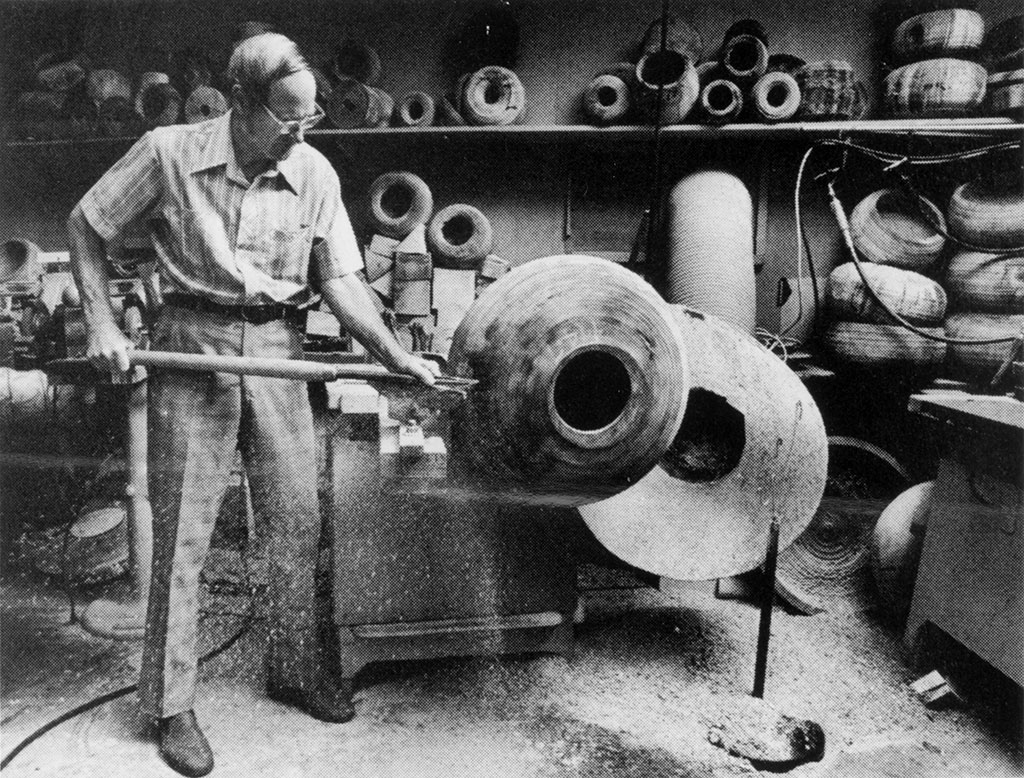
This lesson looks at the woodturning craft of the Moulthrop family. The Moulthrops supported each other emotionally and financially as Ed, Philip, and Matthew chose careers in woodturning. The Moulthrops have a great connection to and fondness for their chosen medium of wood. They all experiment to push the limits of their craft.
Investigation (one 45 minute class period)
Before Viewing
- Introduce students to the Moulthrops and describe briefly what they will see.
- Have students look for the following: References to careers, evidence of family support, examples of invention and affection for wood as a medium.
- View the Moulthrop family segment of the Craft in America: FAMILY episode on the DVD or online at www.craftinamerica.org/short/the-moulthrops-segment.
After Viewing:
- Ask for student reactions. What did they think of the work? It is awe-inspiring, and students may want to share comments.
- Note the continued references to jobs (the gallery owner notes the careers that Ed, Philip and Matt left to become artists. Renée and Amanda discuss their husbands’ switch to their artistic careers. Matt states he did not think he could make a living as an artist.) Are there beliefs about art as a career indicated by these views? (People may stereotype art as “not a real career,” or less successful than being an architect, attorney, or working in business.) Yet the Moulthrops have made careers in art. In fact, Ed states that when he taught architecture, the family struggled to make ends meet. It was his artwork that brought them a more comfortable life.
- Share information on art careers. Discuss which have appeal to students. Note how the Moulthrops are described as happy in their work. A discussion about earnings vs. contentment in a job can be useful in defining goals for students. What are different ways to define success in a career? (Feeling one makes a difference or contributes, being able to invent or experiment, monetary, enjoyment of the tasks, working outside or in pleasant surroundings, being with people you like, working with family, getting to travel, gaining respect, etc.)
- Have students describe the ways in which the Moulthrops support each other. (Renée and Amanda recount supporting their husbands’ decisions to become full-time woodworkers. Ed, and then Philip, served as teachers in the family, handing down the craft. Matt admires and respects his elders’ work.)
- Ask students for examples of invention displayed by the Moulthrops. (Ed created his own tools and pioneered the giant turnings. Philip created the mosaic-style bowls with epoxy, and the glaze machine based on the NASA glove-making design. Matt invented new polishing methods.)
- How would students describe the feelings that Philip and Matt have for wood? (Philip says, “…you look at the piece of wood and you can imagine something about the life of the tree.” When Philip picks up a piece of wood, he notes, “It has this feeling of still being alive in your hand.” Matt likes, “being able to extend the life of a tree…” and mentions that his grandfather once used a tree planted by Thomas Jefferson. The Moulthrops have an almost spiritual connection to the wood they use.) Help students find connections to objects they may feel similarly about. Some students may feel affection for their own choice of art medium, or specific sports equipment, clothing items, etc.
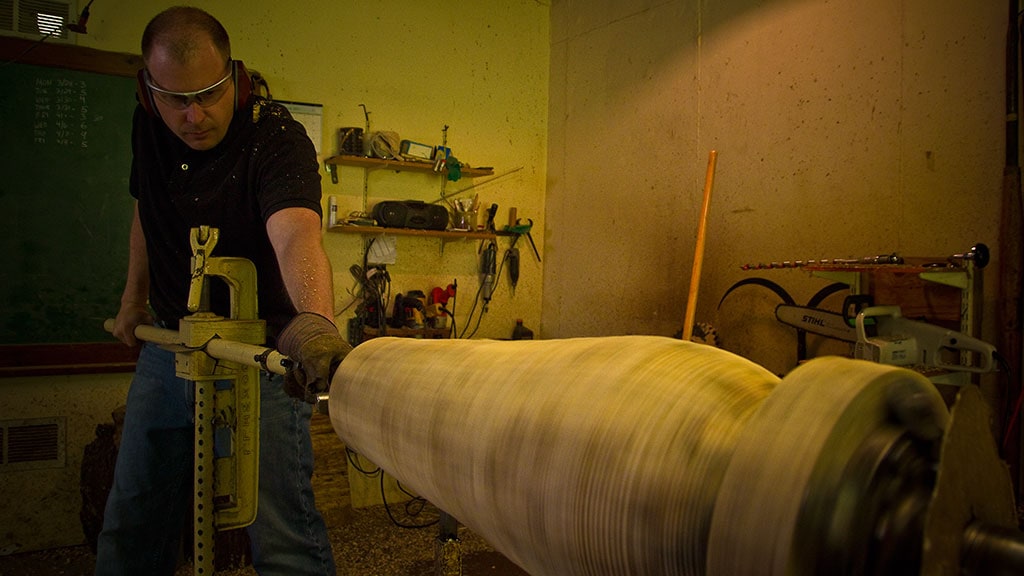
Studio Production
Inventing Wood Finishes (one 45 minute class period)
Using the worksheet, Inventing Wood Finishes, have students experiment with various finishes on scraps of wood. Note: pieces of paper grocery bags make surprisingly good polishers/sanders for wood. Depending on the abundance of material at hand, you may want to form students into groups to work together. The activity lends itself to group work.
Students will try out their own ideas for wood treatment. They will record their “recipes” and they will note the results on the worksheet. You may want to have some students document the process by photographing the activity and the resulting examples.
Circulate while students work to be available for help, clarification and conversation. Encourage layering and multi-step processes for more variations. Encourage students to describe the feel and appearance of the finishes, beyond their first impressions. There is texture and appearance, but what might these evoke as a mood, style, feeling or symbol? Have students share their results and post their recipes for others to see and possibly use.
Extending the Life of a Tree (four or more 45-minute class periods)
Using the worksheet, Extending the Life of a Tree, have students consider ideas discussed that may resonate with them. They may want to explore further the ideas of family, support, trees, nature, recycling, history and legacy, career, success, invention, or art. Combining these terms may also be a jumpstart for ideas to be presented (such as family and tree, or history and recycling).
Combining the experimental wood finish, wood material, and idea/concept, students will decide how to present their concept using materials at hand. Some students may have ideas beyond the scope of the project, which can be encouraged as similar to the way the Moulthrops push the limits of their art. Ideas change as students re-consider materials, messages, and what they want to create. Encourage students to choose a direction, and allow them to vary it if their ideas and experiments lead them elsewhere.
Demonstration
A demonstration of tool use is advisable, as students get ready to produce their art.
Remind students of finishing options; they may want to use someone else’s recipe for a finish.
Demonstrate decoupage: Brush diluted white glue (half water and half glue) or matte or gloss medium to wood surface. Apply cut paper, smoothing it over the surface. While wet or when dry, brush another coat on top of paper. Allow surface to dry.
Demonstrate connecting methods such as gluing, working with hammer and nails, and using a drill and screws. Go over safety rules and precautions. Brainstorm aloud as students work, encouraging, offering ideas, and reminding students of options in materials, finishes and concepts.
Stop for in-process critiques. Have students show their artworks to each other. Pause and look at the work from a short distance. Have students ask each other to interpret their artworks. Is the work representing the student’s intention? Does this matter to the student?
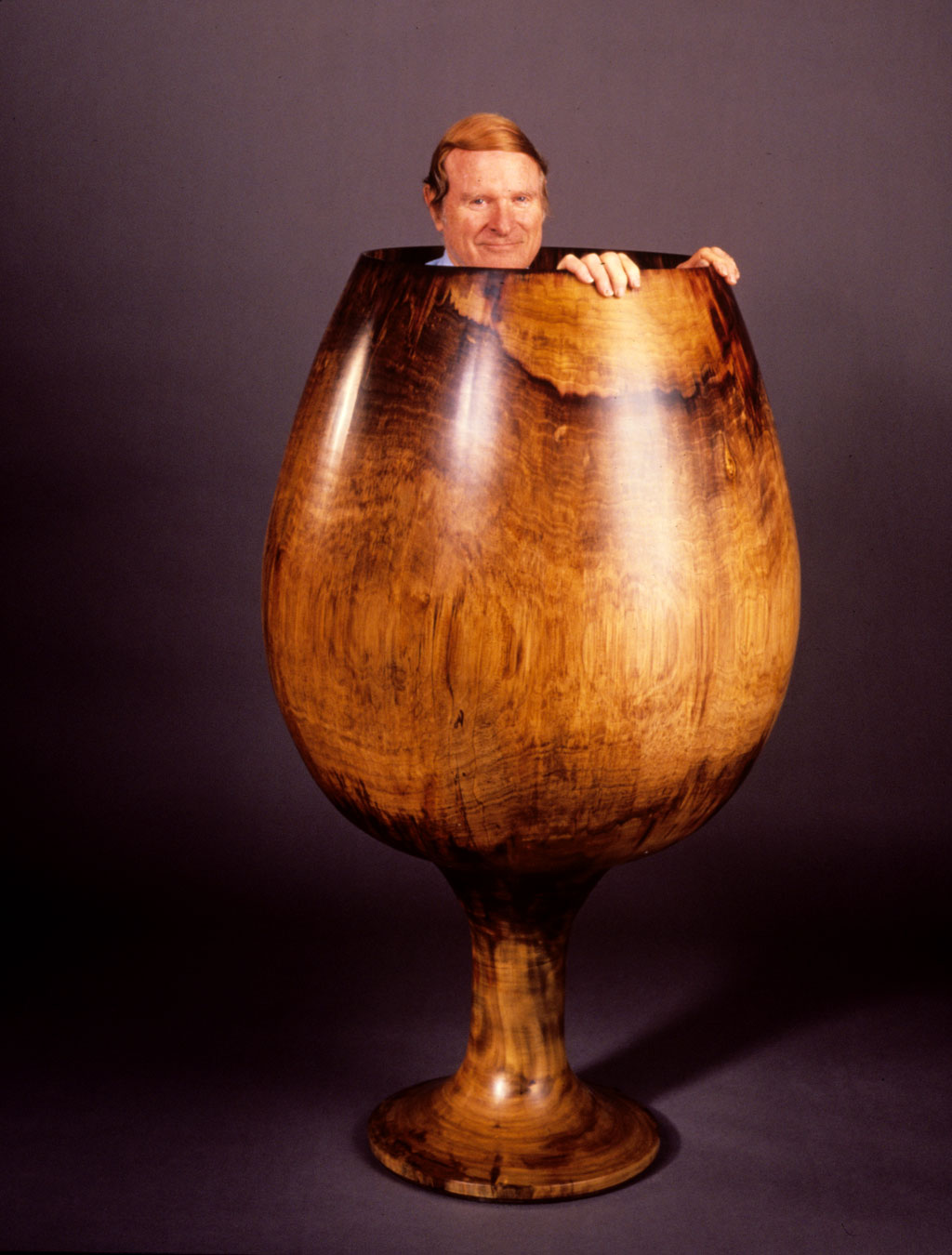
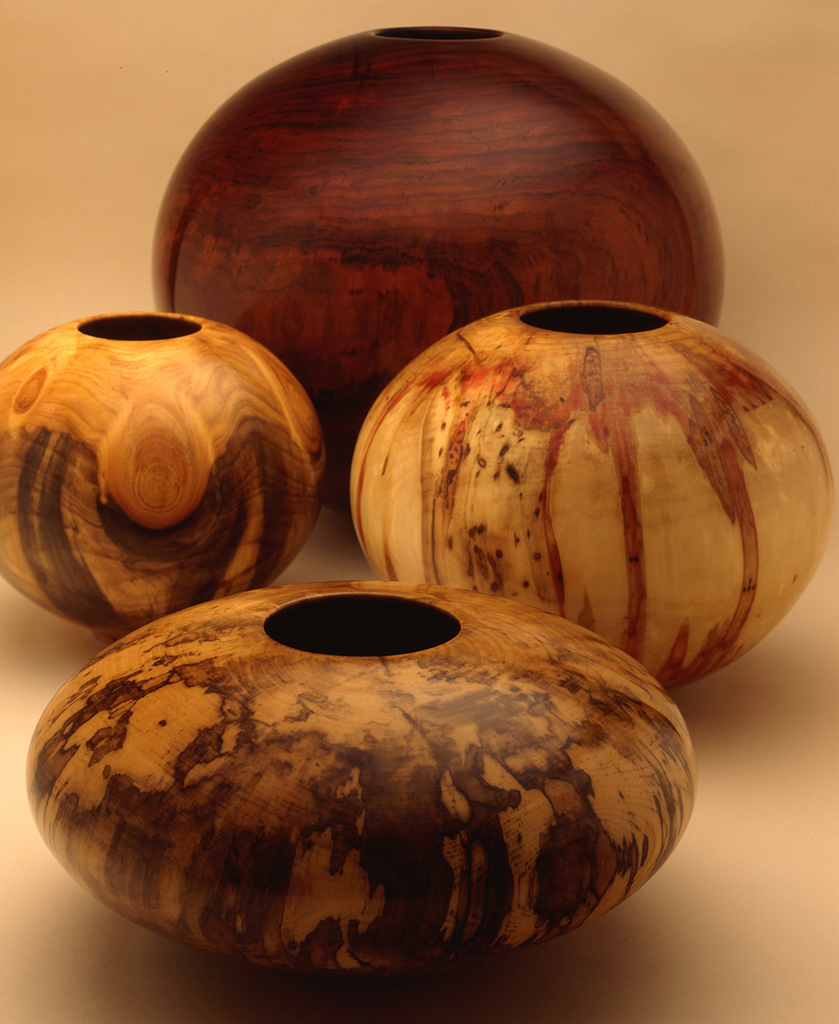
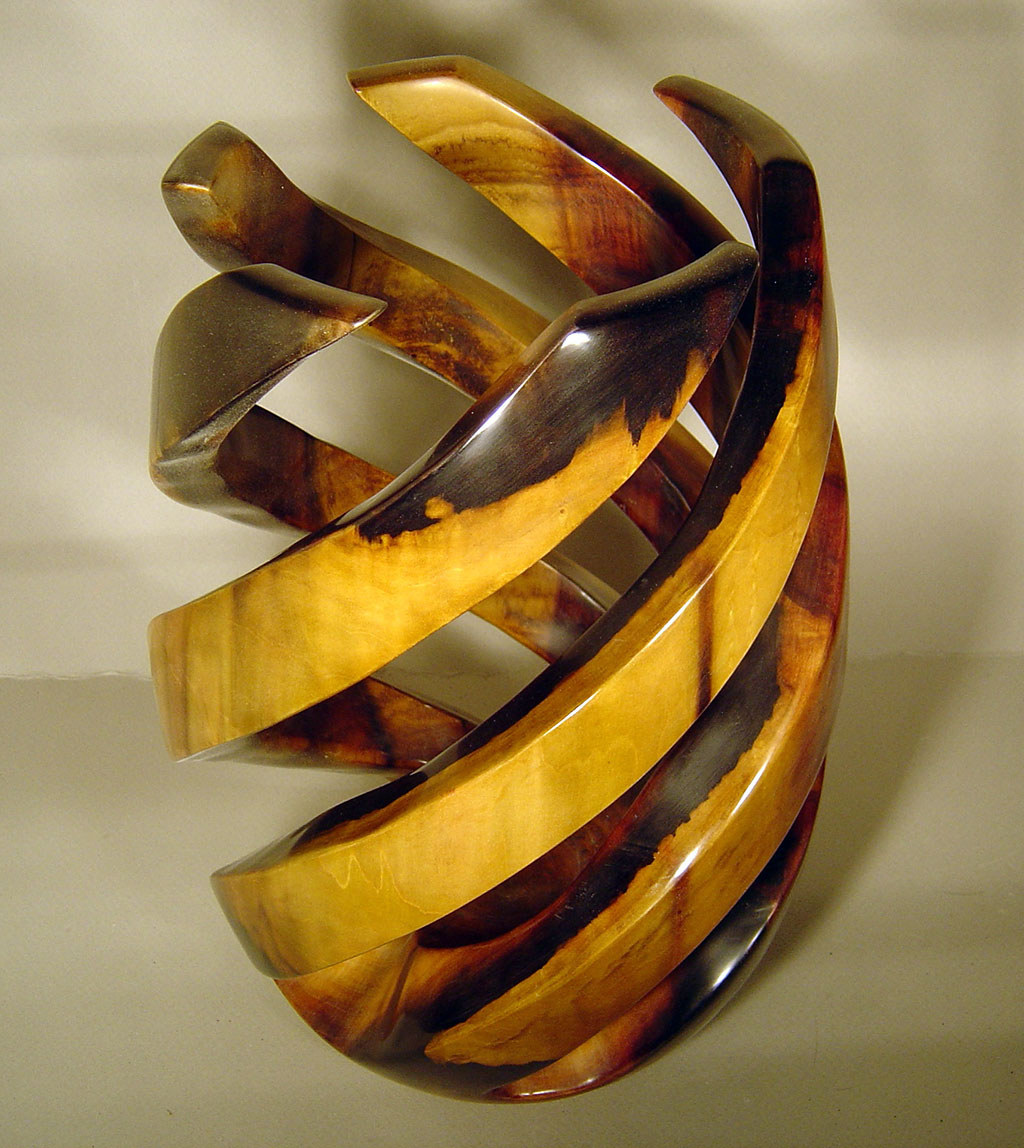
CLOSING STRATEGIES
Reflection
When work is complete, students should create an artist’s statement, with artwork title, artist’s name, and a short explanation of the piece on a card, tag, or typed page, to be presented with the artwork. Consider displaying photographs of the students working, a selection of the finishing experiments, and student artworks in a showcase or hallway to share with the school community.
Assessment
By examining the worksheets and the student’s artwork, and in discussions with the student throughout the project, it should be evident that the student can:
- Explain the unique aspects of the Moulthrop’s work.
- Delineate ways families may support each other.
- Describe several art careers.
- Show evidence of experimentation with surface treatments of wood.
- Articulate an idea through an artwork created from recycled wood.
Additional Resources
Students may examine the work of the following artists on the Craft In America website.
- Michelle Holzapfel is a self-taught woodturner. She makes use of the imperfect wood scraps left behind by loggers.
- Sam Maloof was a self-taught furniture maker and a MacArthur “genius” award winner.
- George Nakashima was a master woodworker. Mira Nakashima, his daughter, carries on the tradition.
Authors
The Educators’ Guide for FAMILY was developed by art educators Amy Albert Bloom and Dolores E. Eaton under the direction of Dr. Marilyn Stewart, Professor of Art Education, Kutztown University of Pennsylvania, Kutztown, PA. Lead Author for The Moulthrops: A Family of Woodturners is Amy Albert Bloom. September 2011.